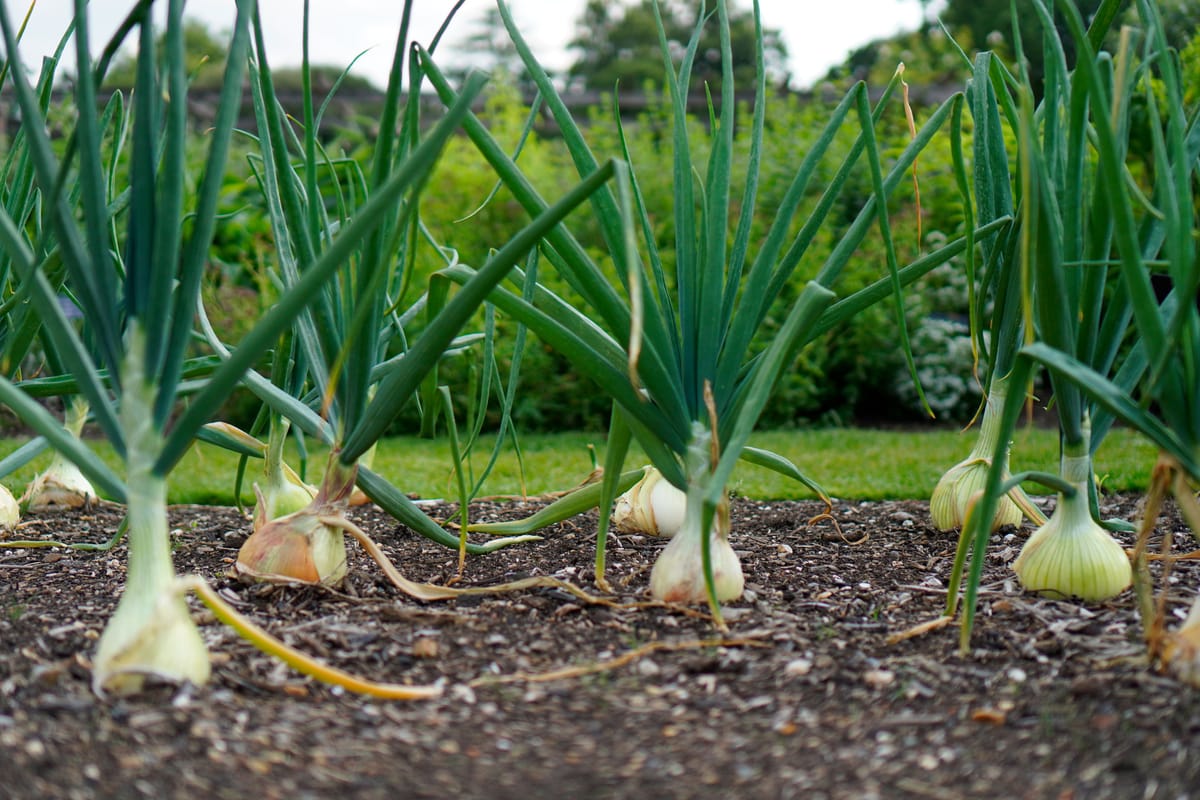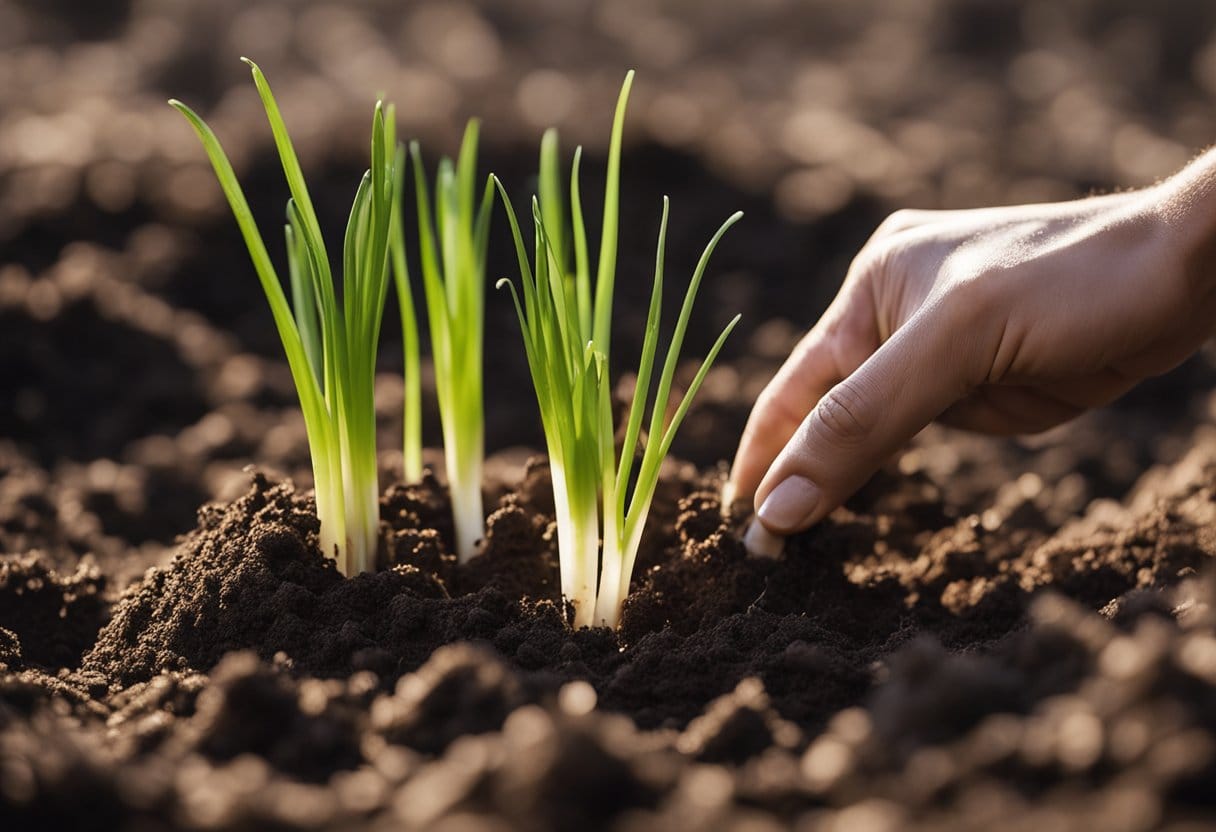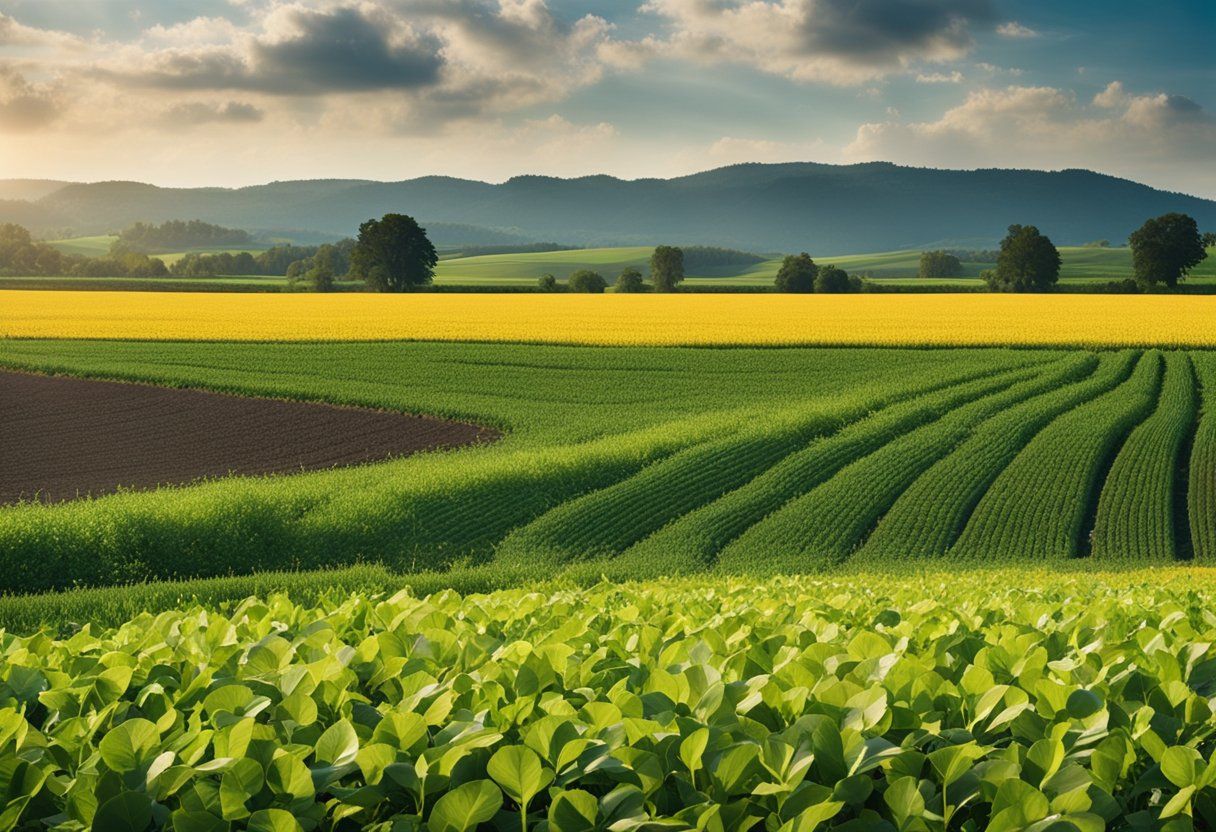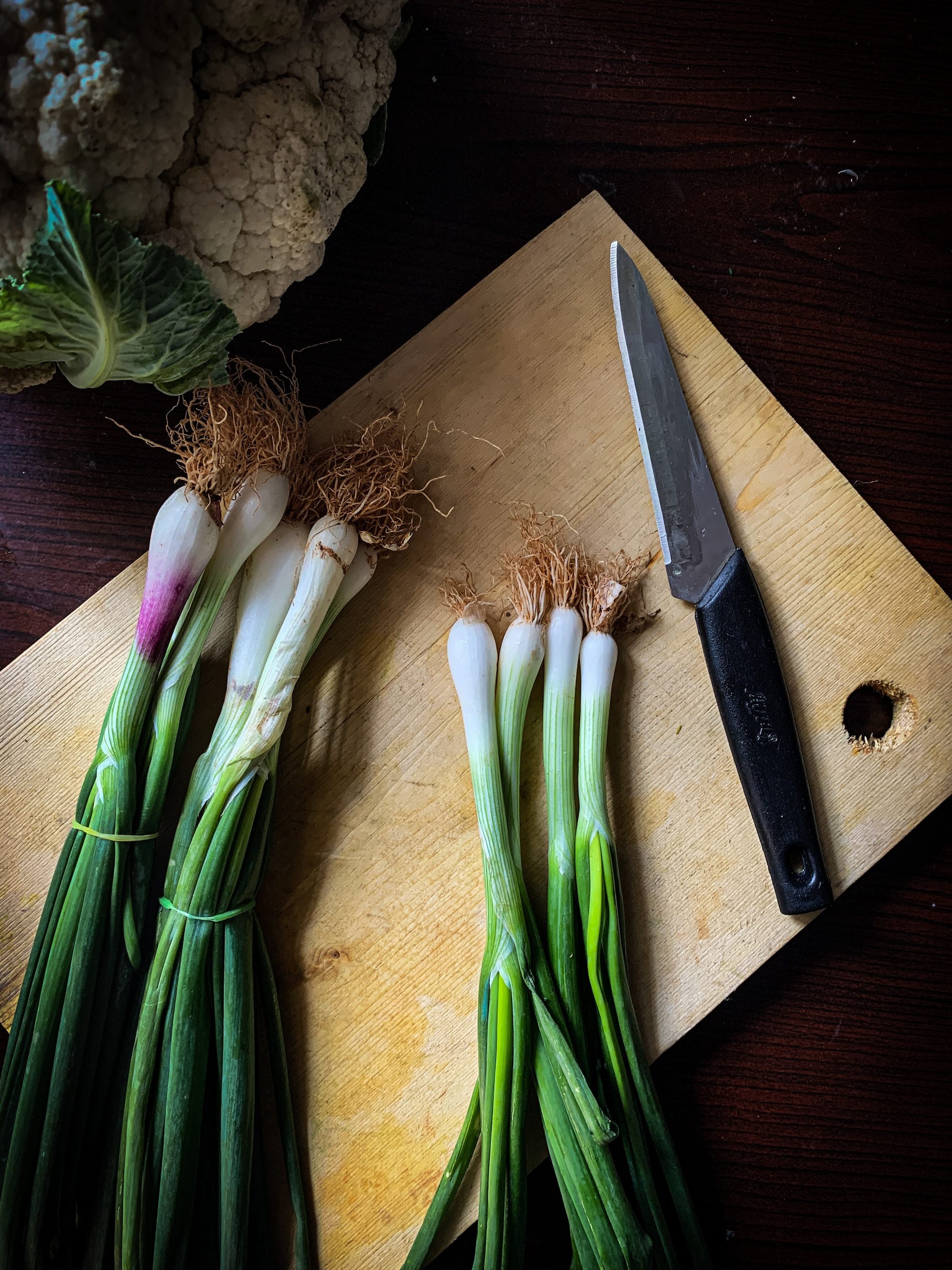Homegrown Spring Onions
Growing spring onions in your home garden provides a delightful culinary asset, offering the crisp, fresh taste of early summer year-round.

These versatile vegetables are not just a flavorful addition to your dishes; they're also effortless to cultivate, making them an excellent choice for novice and experienced gardeners.
With a shallow root system, spring onions can thrive in various spaces, from small garden beds to containers on a sunny windowsill.
Preparing your garden for spring onions is an exciting endeavor.
Start by choosing a sunny spot with well-drained soil, as spring onions prefer a location that receives a generous amount of light daily.
Organizing the space efficiently, you'll sow seeds or plant sets just as the ground becomes workable in the spring or fall for those varieties suited to overwintering.
Caring for your spring onions involves minimal effort once established, but ensuring they have adequate water and are weed-free will encourage healthy growth.
Key Takeaways
- Cultivating spring onions at home is straightforward and rewarding.
- A well-prepared garden spot and proper care lead to healthy spring onion growth.
- Spring onions can be easily incorporated into your meals for fresh flavor.
Planning Your Spring Onion Garden

Embarking on the journey of growing spring onions in your garden begins with careful planning.
Selecting suitable varieties and understanding the soil and sunlight requirements sets the stage for a successful harvest.
Choosing the Right Varieties
When you're picking spring onion varieties, consider factors like flavor and growing time.
For a classic taste, 'White Lisbon' is a popular choice, and if you're looking for something with a bit more zest, 'Red Baron' could add a splash of color and sharpness to your dishes.
Reflect on the culinary uses you envision for your spring onions, as this will guide you in choosing the types that best suit your needs.
Understanding Soil and Sunlight Requirements
Spring onions flourish in full sun, so aim to plant them in a part of your garden that receives plenty of light throughout the day.
For soil, it's crucial to ensure it's rich in nutrients and well-draining. You can improve your garden soil by amending it with compost or a well-balanced fertilizer.
The ideal pH level for spring onions is between 6.0 and 7.0. Testing your soil's pH can help you make necessary adjustments before planting.
Here's a quick soil checklist for your spring onion garden:
- Texture: Loamy to sandy, allowing for good drainage
- Fertility: Rich in organic matter
- pH: Slightly acidic to neutral (6.0-7.0)
Plan your planting rows thoughtfully, spacing them about 15 cm (6 inches) apart to give your spring onions ample room to grow without competition.
Planting and Growing Spring Onions

Growing your own spring onions can be a rewarding experience as these resilient plants often require minimal care while providing a crisp, flavorful addition to your meals.
Whether you're a novice or an experienced gardener, understanding soil preparation, seed sowing, and care for seedlings will ensure a bountiful harvest.
Preparing the Soil
Before you start, you'll want to ensure that your soil is well-suited for spring onion growth.
Choose an outdoor spot with good drainage, as waterlogged soil can lead to rot.

Amend the soil with compost to add nutrients and improve its structure. Your goal is to have loose, fertile soil that allows the delicate roots to expand easily.
Sowing the Seeds
When the threat of frost has passed, usually around April or May, it’s time to sow your spring onion seeds.
Plant them in rows, maintaining a space of about 16 inches between each to prevent overcrowding.

The ideal soil temperature for sowing is between 50°F (10°C) and 68°F (20°C).
Sow the seeds about 1 inch apart and cover them lightly with soil. Water gently to ensure even moisture without displacing the seeds.
Caring for Seedlings
Keep an eye on moisture levels, as seedlings need consistent watering to sprout successfully, but beware of overwatering.
When the green tops grow, you can introduce a thin layer of mulch to retain moisture and control weeds.
As the plants develop, thin them out to allow adequate space for the bulbs to mature.
If you initially started seedlings in pots, transplant them to your garden or a larger container once they're hardy enough to handle the move.
Harvesting and Storing Your Crop

In this guide, you’ll learn the precise steps to take your homegrown spring onions from garden to kitchen while keeping them fresh as long as possible.
When and How to Harvest
You should begin harvesting your spring onions once their green tops start to fall over and turn brown.
This typically indicates that they're mature and ready for harvest.
To remove them from the soil, lightly grasp the base of the greens and pull; if the soil is compact, gently loosen it with a garden fork first, being careful not to damage the roots.
Post-Harvest Handling
Once your onions are harvested, shake off any excess soil, but resist the urge to wash them as moisture can encourage decay.
Trim the roots, and remove only the loose outer layer if it’s dirty or damaged.
The onions must be cured; lay them out in a warm, dry place with good ventilation for a week. This process hardens the outer layer and prepares them for storage.
Storing for Longevity
To store your onions effectively, find a cool, dark place with a steady temperature between 35-40°F (2-4°C).
Your fridge is a good option for this. Wrap the onions in paper towels or place them in a mesh bag to ensure they have enough air circulation.
If you have many onions, you can store them in an airtight container in layers separated by paper.
Check periodically for any signs of spoilage, and use any onions starting to soften first.
Common Problems and Solutions
When tending to your homegrown spring onions, vigilance in pest management and disease prevention is vital.
These are common areas where challenges arise, but with the proper knowledge, you can easily navigate these problems to grow healthy and flavorful onions.
Pest Management
Your spring onions are susceptible to various pests that can hinder their growth. Thrips, tiny insects that feed on onion leaves, can be particularly troublesome.
Regularly inspect your plants for signs of thrip damage, such as silver streaks on leaves.
To manage thrips:
- Introduce beneficial insects such as ladybugs or lacewings to your garden as natural predators.
- Use yellow sticky traps to monitor and reduce thrip populations.

Onion maggots are another pest to be cautious of. These larvae feed on the roots and can cause severe damage. To prevent them:
- Rotate your crops annually to discourage infestation.
- Apply diatomaceous earth around the base of your plants to deter adult flies from laying eggs.
Disease Prevention
Diseases often occur when conditions are damp and poor air circulation around your plants.
Fungal diseases such as downy mildew can quickly spread through your onion crop.

Implement these disease prevention strategies:
- Ensure proper spacing between plants for airflow.
- Water at the base to keep foliage dry and mulch to prevent splash-back of spores.
Be on the lookout for onion white rot, which causes wilting and yellowing of the foliage.
Unfortunately, if your onions contract this disease, you must remove and destroy affected plants. Prevent it by:
- Planting onions in well-draining soil.
- Rotating your crops with non-hosts like tomatoes or peppers to minimize the risk.

Remember, weeds can harbor pests and diseases, so clear your garden beds.
Pull weeds regularly and avoid planting onions close to garlic, as they can share common pests and diseases that could compromise both crops.
With careful observation and proactive measures, your spring onions will thrive.
Using Your Homegrown Spring Onions
Your homegrown spring onions are versatile vegetables that can be a flavorful addition to various dishes or regenerate to sustain your supply.

In the Kitchen
Spring onions, scallions, or green onions are delightful to freshen up your meals.
They can be chopped and added to salads, providing a crisp texture and a mild onion flavor that complements lettuce and other vegetables.
They’re also perfect for garnishing soups and stir-fries, giving a pop of color and zest.
Remember, the white base has a stronger taste and is suitable for cooking, while the green stalks are milder and ideal for raw use.
- Salads: Slice thinly and mix with lettuce, tomatoes, and your choice of dressing.
- Stir-fries: Dice the white parts and sauté at the start for a deeper flavor.
- Garnishes: Chop the green parts and sprinkle them on top of the finished dishes.
Since they're harvested young, spring onions are less pungent than mature onions, making them an excellent choice for a fresh, light onion flavor without overwhelming your dishes.
Regrowing from Scraps
Don't toss out the root ends of your spring onions after using them in the kitchen. You can regrow them to yield another batch of fresh green onions.
Place the roots in a cup of water, ensuring they're submerged, and position the cup on a sunny windowsill.
Change the water every few days, and in no time, you'll see new green shoots emerging.
Once they're a few inches tall, you can transplant them into the soil or grow them hydroponically.
Here's a quick guide to regrowing:
- Cut: Leave about an inch of the white root end.
- Submerge: Place the roots in water, with the shoots facing up.
- Grow: Wait for the green shoots to return, then harvest again!
Regrowing spring onions is an easy way to minimize waste and ensure fresh green onions are always at your fingertips.
Frequently Asked Questions
How do you grow spring onions in water?
To grow spring onions in water, start with onions with roots. Place the roots in a container with enough water to cover them, ensuring the base gets ample hydration. Replace the water every few days to prevent bacterial growth.
What is the best way to grow spring onions in pots?
The best way to grow spring onions in pots is to select a medium-sized container with good drainage.
Fill the pot with a mix of potting soil and compost. Plant the seeds or bulbs at a shallow depth and ensure they get ample sunlight and regular watering.
At what depth should green onions be planted?
Plant green onions at a depth of about 1 inch into the soil. This depth allows the roots sufficient room to establish while the bulbs remain close enough to the surface to develop correctly.
Can spring onions be eaten directly from the garden?
Yes, you can eat spring onions directly from the garden. Just wash them thoroughly to remove any soil or garden pests before consuming.
How many times can spring onions be regrown?
Spring onions can often be regrown several times from the original bulbs. Cut off the bulb, leaving some white parts and roots, then replant or place in water. You can do this repeatedly until the plant’s vigor diminishes.
What are the stages of spring onion growth?
The stages of spring onion growth include germination, where the seed sprouts; vegetative growth, with the development of roots and shoots; and maturation, where the plant becomes ready to harvest. This cycle can take up to 8 weeks from planting.



